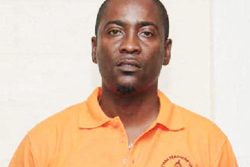Locked in our homes as we are for the duration, some of us may be overcome by the urge to embark on a thorough decluttering, and create a clear, orderly space in our living quarters. Apart from anything else such an exercise can serve as a distraction from the extraordinary stress not just Covid-19, but also Gecom and the coalition have inflicted on the nation. Many (although certainly not all) of the hoarders among us are probably highly literate, whose normal propensity is to hang on not just to books, but to any paper with words, whether printed or manuscript.
It was the current situation which last Sunday caused columnist Dr Ian McDonald to reflect on the ephemera he had collected over time, and the conflicting impulses to which he was subject in relation to these. One, he wrote, was “to allow chaos to take hold” and the other was “to keep everything tidy and in good order.” He went on to ruminate on the importance to posterity of what might be considered “rubbish” today, citing Samuel Pepys’s scrapbooks as an example. This 17th century compulsive diarist and hoarder had kept all the latest tunes, ballads and street songs of his time and pasted them into his notebooks along with his annotations. In addition to that he had kept more than 4,000 woodcuts illustrating the ballads. Nothing else like it from the period exists anywhere else, and nowadays it is regarded as a treasure trove for social historians.
But that is the thing about history. Its scope is not confined to what kings, queens, presidents, prime ministers, politicians of one sort or another and the privileged classes in general have done, decided, written or built, or how they lived. It is also about the ordinary man and woman, not excluding members of the underclass; we need to know how they lived too, and what people in general thought and how they spent their time.
And for those who come after us, what will we leave them? Of course, as Dr McDonald’s sons told him, everything could be stored on computer, except that a GPL surge, for example, can burn a hard drive and cause decades of documentation and photographs to be lost. As Mr Dave Martins related in his column, this is exactly what happened in the case of the material his wife had amassed for the benefit of Guyana, some of which also pertained to personal memories.
In a subsequent letter to this newspaper, Mr George Cave empathised with Dr McDonald, and admitted to having had “serious difficulty over what to ‘discard’ and what to keep.” He wrote that he was often “forced to ‘discard’ when termites and rats and roaches (and intrusive rain water!) took their toll”. (He might have added bookworm and silverfish.) And that is one of the major problems of keeping anything for any length of time in Guyana, as opposed to a colder climate; the humid tropics are simply not designed for the preservation of the material heritage, particularly the flimsier material heritage, and to do it successfully requires considerable monitoring, time and effort.
Mr Cave mused about what he should do “with so much ‘good stuff’ that remains”. While he may, he said, “keep looking back with nostalgia over what I used to have, and what I may even still have,” he knew of “nowhere in Guyana that can be depended on to preserve materials for the very, very long run.” And that is the problem in this country; even in the case of formal records and national book collections, these have either been allowed to moulder away, or have been actively destroyed or flooded out, among other disasters.
Leaving the unfortunate story of the archives aside, there is probably nowhere in Guyana that has a complete set with no gaps of all the post-Independence newspapers. And then there is the library of the former Ministry of Information which contained some of the kind of material which Messrs McDonald and Cave collect, and which was deliberately destroyed after the PPP/C first acceded to office. There were all the tapes of folk music as well as folk tales and traditions collected by Wordsworth McAndrew an unknown number of which were wiped (along with others of interest) because no money was made available to buy new tapes. And one wonders too, to give another example, what happened to the historical cricket photos on the walls of the GCC at Bourda, since that building nowadays appears neglected.
In other words, public institutions have failed us as repositories of the evidence of our past, largely because our major political parties have very partisan interests where history is concerned. Even Patrick D’Argan’s house which was left to the nation for a social history museum never collected anything, and instead was utilised as the office for the local Unesco representative. Maybe as a society we are not yet old enough to appreciate why we should preserve the ‘ephemera’ of bygone eras, and the McDonalds and Caves of our country are performing a service those in government have failed to do.
And what should they do eventually with all that “stuff” – or some of it, at any rate? Well, there is always Mr Gary Serrao’s remarkable Guyana Heritage Museum on the West Coast, a private venture which puts the public authorities to shame.





